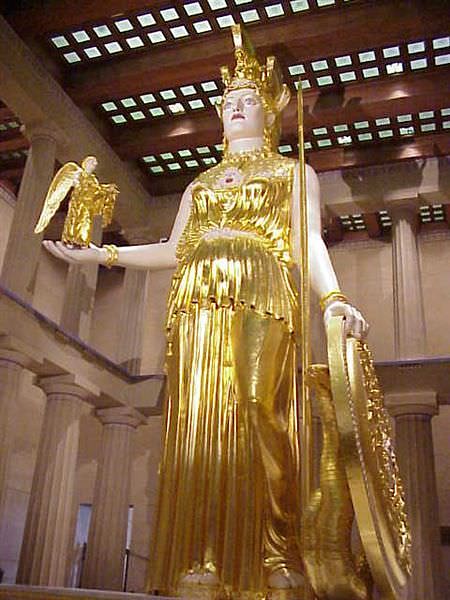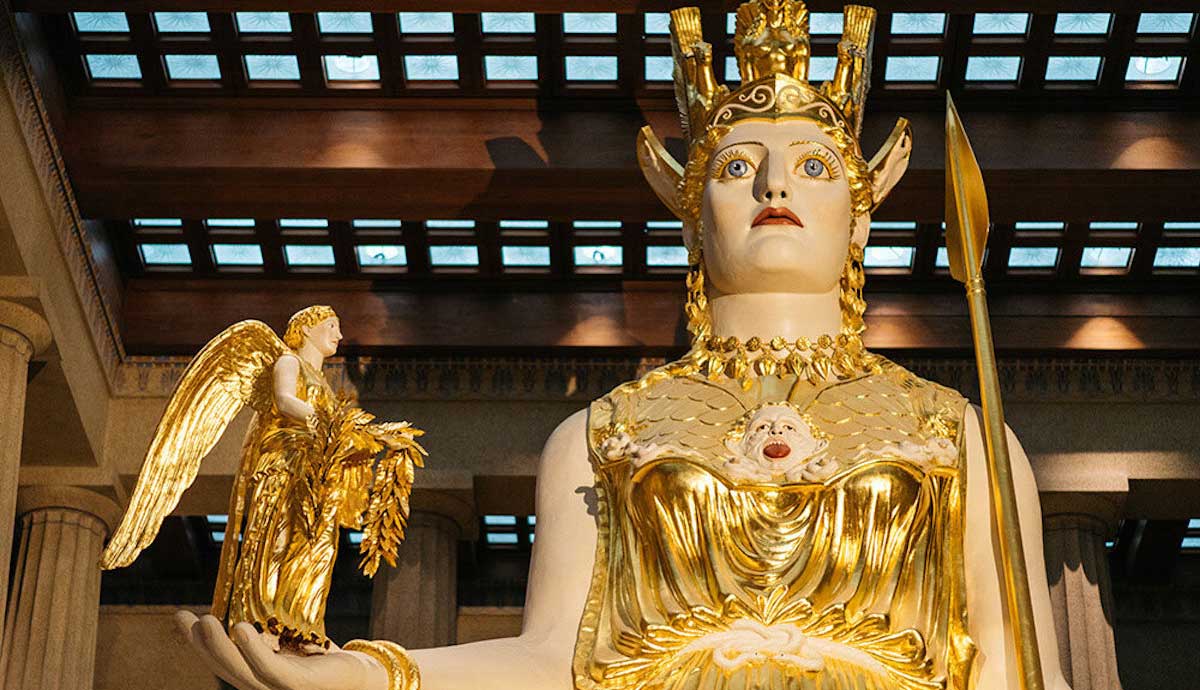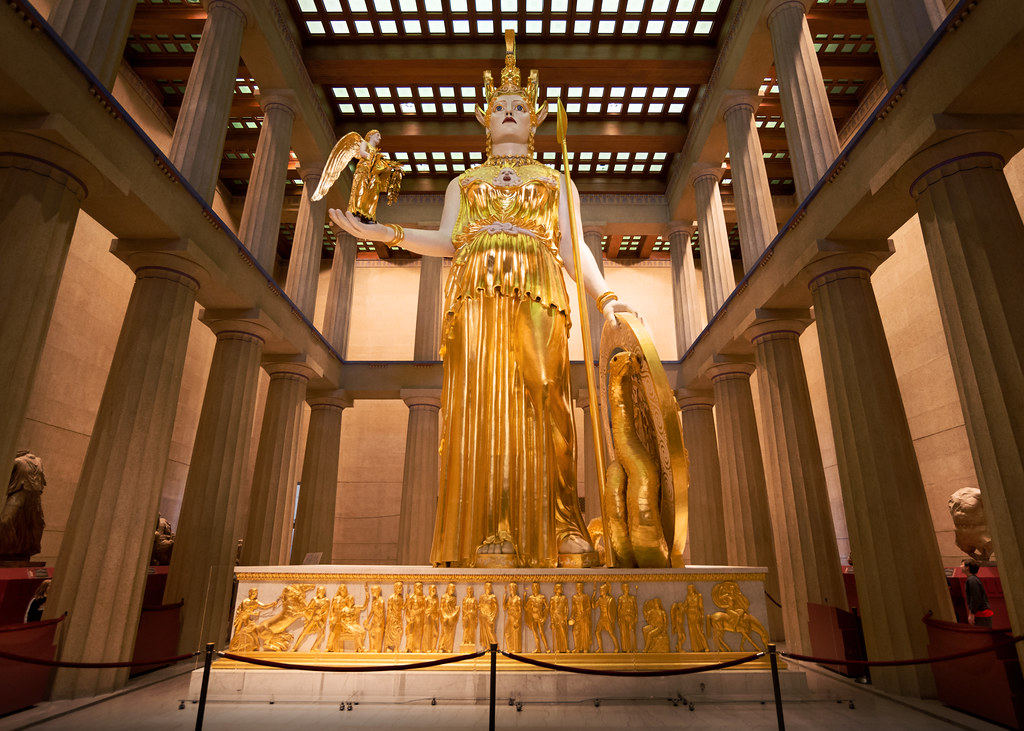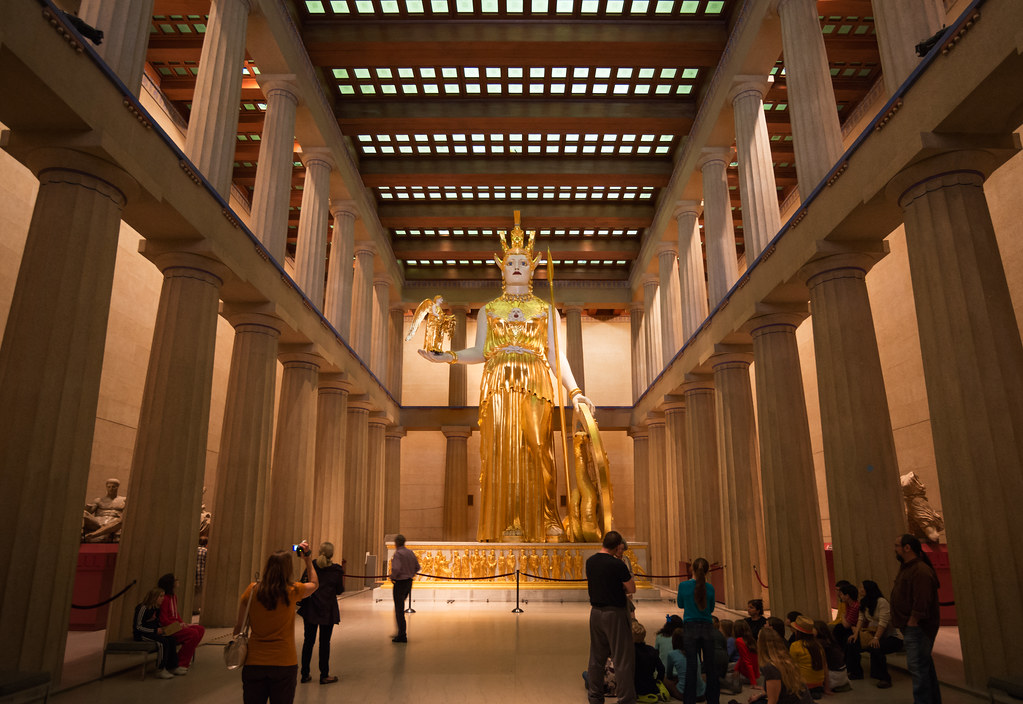Table of Contents
ToggleThe Statue’s Place in the Heart of the Parthenon
At the center of the Parthenon on the Acropolis in Athens, an awe-inspiring statue of Athena once stood, towering over worshippers as a testament to the city’s devotion to its patron goddess. Created by the master sculptor Phidias in 438 BC, this statue was a symbol of Athens’ wealth, cultural leadership, and military power. Commissioned by the influential Athenian statesman Pericles, the statue was part of a larger project to honor Athena and elevate Athens as a beacon of the Greek world.

Phidias and the Art of Chryselephantine Sculpture
The statue of Athena, known as a Chryselephantine work, represented the height of ancient Greek sculptural technique and artistry. Chryselephantine sculptures were crafted with a wooden core and then overlaid with precious materials—gold for the armor and ivory for the exposed skin. This method demonstrated not only technical prowess but also the wealth and splendor of Athens. Standing over 12 meters (40 feet) tall, the statue presented Athena in a powerful stance, armored and ready, her hand holding a small figure of Nike, the winged goddess of victory. This iconic posture highlighted her dual role as a goddess of wisdom and war, protector of Athens, and bringer of victory.

Symbolism and Design: Athena’s Armor and Attributes
The armor and weapons adorning Athena’s statue were steeped in symbolic meaning. Her helmet, decorated with mythological figures, and her breastplate, likely featuring the terrifying Gorgon’s head, portrayed her as a warrior-goddess, ready to defend her people. The shield she held displayed intricate battle scenes, possibly symbolizing past victories and the strength required to maintain peace and order. The inclusion of Nike underscored Athena’s association with triumph and reinforced her reputation as a powerful guardian of the city.

The Loss of the Statue and Its Lasting Legacy
While this majestic statue did not survive into the modern era, having likely been dismantled or destroyed during the Byzantine period, its grandeur has persisted through historical accounts, ancient descriptions, and Roman reproductions. These sources give a glimpse into the magnificence of the original work and its profound impact on those who saw it. Writers such as Pausanias described Athena’s imposing presence within the Parthenon, capturing the reverence she commanded.

Continuing Inspiration from a Lost Masterpiece
The lost statue of Athena remains one of the great icons of Greek art and spirituality. Its presence in the Parthenon symbolized not only Athena’s divine protection over Athens but also the cultural and artistic achievements of the city. Although the statue itself is gone, its influence endures through smaller statues and scholarly reconstructions, preserving the spirit of ancient Athens and reminding us of the city’s historic role as a center of innovation, artistry, and power. The statue of Athena Parthenos, as it was known, has inspired countless generations and endures as an emblem of the ideals of ancient Greece.

Conclusion: An Enduring Symbol of Ancient Athens
Athena’s statue at the Parthenon, though lost, continues to captivate historians, archaeologists, and admirers of classical art. Phidias’s masterpiece served as a proud declaration of Athens’ strength and prosperity, embodying the essence of the goddess who protected the city and led it to glory. This monumental work symbolizes the zenith of Greek art, the rich mythology of Athena, and the enduring power of ancient Athens as a center of civilization and cultural legacy.

